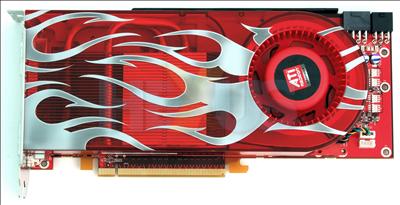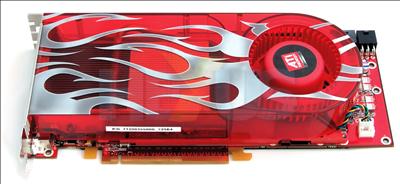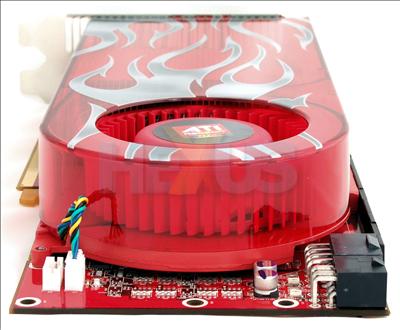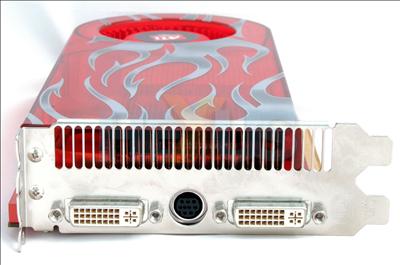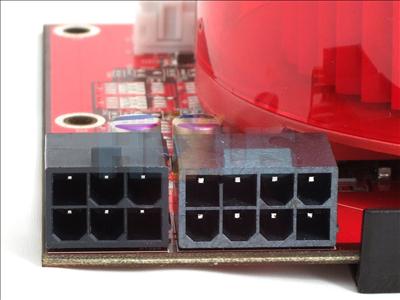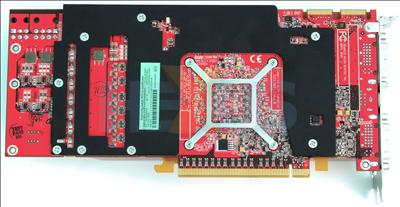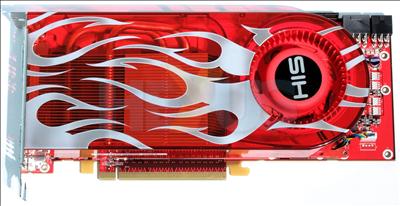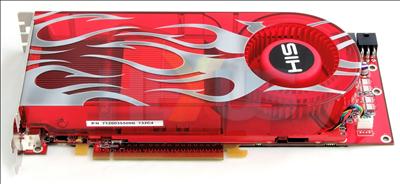Radeon HD 2900 XT appearance
So many words and so few pictures. Let's take a look at a reference Radeon HD 2900 XT, shall we?
It's big and it's heavy. The reference card is a little smaller than a GeForce 8800 GTX, measuring in at 240mm x 99mm (lxh), but weighs in at 950g - around 200g more than its G80 competitor.
Most of that extra weight, as you would suspect, is taken by a larger copper heatsink that uses the tried-and-trusted fin/heatpipe approach in keeping the GPU cool. 700m transistors requires an efficient HSF design.
Dual-slot-taking coolers are the way to go if you want a powerful design today, it seems. The reference card's fan was slightly noisy in 2D mode and modulated pitch, annoyingly, under 3D load. AMD is aware of the problem. We'll see how long it takes to fix.
The rear aspect could be of any card. Remember, both DVI ports are dual-link and support dual-link (integrated) HDCP. Using an AMD HDMI adapter will also allow you to push both audio and video through each port, too.
Jumping the gun and thinking about power requirements, an eight-pin PCIe connector raises a concerned eyebrow. We know of only one PSU (Enermax Galaxy 850W) that ships with the necessary connector for beefed-up power delivery. The good news is that the card will operate just fine with two six-pin connectors, with one placed in the eight-pin slot, obviously, but AMD recommends using the full eight-pin variety when 'performance tuning' (read overclocking). We'll investigate power requirements later.
We alluded to a 512-bit external memory controller, manifested by eight 64-bit channels. AMD's used conservative GDDR3 memory that's rated to 1650MHz. Still, that's over 100GB/s of juicy bandwidth with the double-wide interface taken into account.
Summary
All the magic is contained within the GPU - the PCB and cooler are solely designed to accommodate it. We imagine that all of AMD's partners will - or be initially forced to - opt for the reference model. Differentiation will take place on price, bundle and warranty.To prove the point, here are a couple of pictures from a retail HIS Radeon HD 2900 XT.
Same clocks, same PCB, different sticker.






